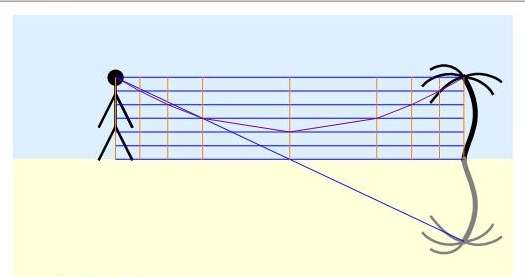You are in a desert on a hot day and see water in the distance. It is not really there, but results from refraction of light. What explains the behavior of the light waves?
1 Answer
This is a result of the relation between air temperature, air density and its refractive index.
Also, total internal reflection plays a part.
Explanation:
As you say, light coming from the sky is refracted as it travels toward the much warmer air near the sand surface of the desert.
As the density of the air is reduced when its temperature rises, the refraction causes the light to bend away from the normal (which we will take to be vertical in this case).
This picture shows it nicely:

It treats the situation as though the air becomes warmer in distinct layers. While this may not be the case, the only difference we have to understand is that the light would not refract in a series of distinct stages, but as a smooth curve instead.
Note that at some point, the angle of incidence becomes so large, that the light is reflected upward. (This is called total internal reflection - like what you ee when you try to look upwards while underwater.)
So, eventually the light will travel upward in reaching your eye, and it will appear as though the ray, which started above you is coming from a point below you!
Such an image will account for the "water" seen in deserts and on roadways in summer.

